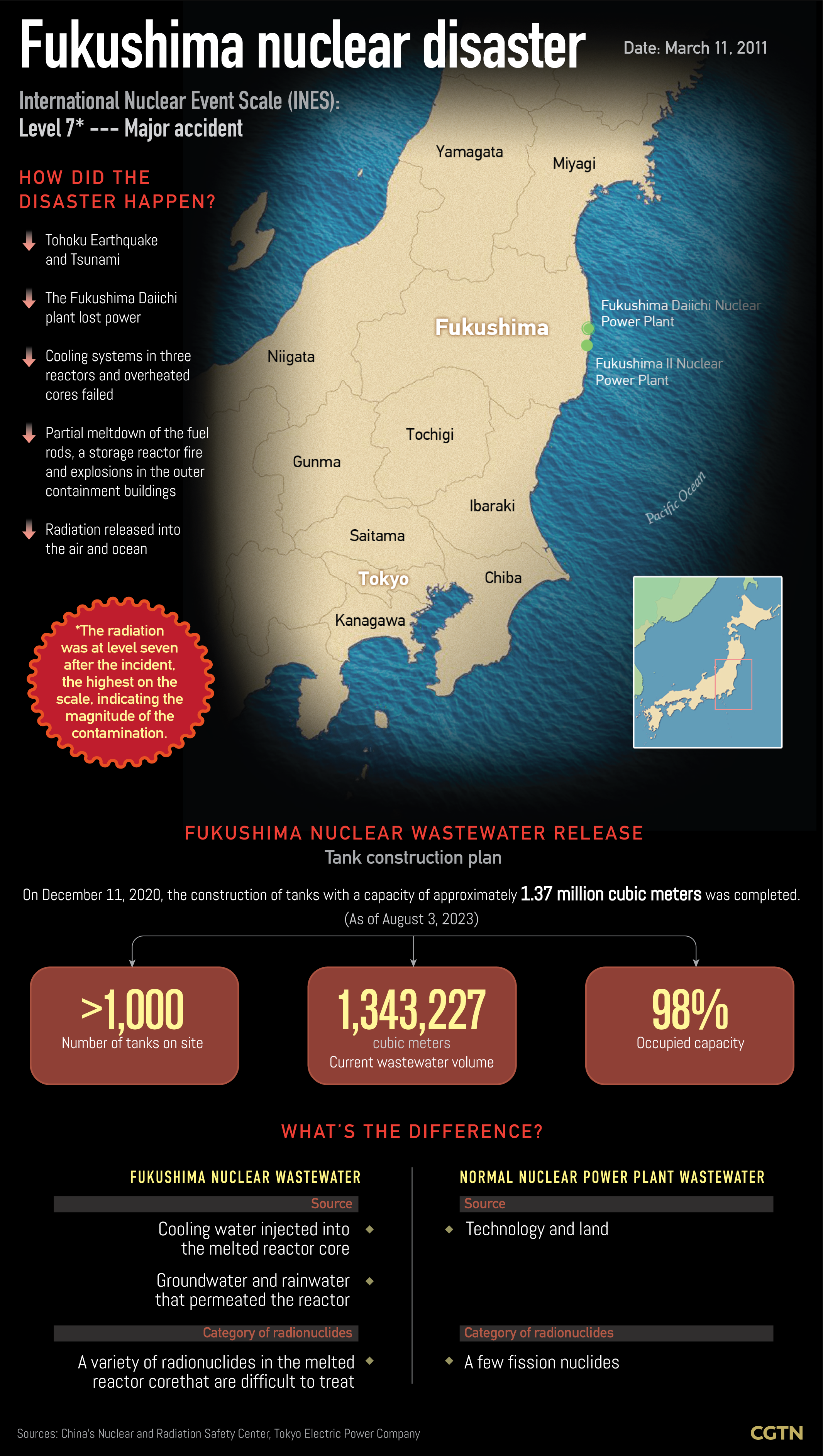A U.S. summit with Japan and South Korea on Friday will include an ambitious set of initiatives to lock in progress between the allies, White House's Indo-Pacific coordinator Kurt Campbell said on Wednesday.
Japan's Asahi Shimbun daily reported in early August that the country plans to decide the date of releasing the Fukushima nuclear wastewater into the ocean after the trilateral summit, citing unidentified government sources.
Turning back the clock to March 11, 2011, an earthquake measuring 9-magnitude struck the waters of northeastern Japan and caused a tsunami. The Fukushima Daiichi nuclear power plant, which sits on the coast, suffered a power outage due to seawater intrusion and a core meltdown at units 1 to 3, resulting in a catastrophic nuclear leak. The radiation was at level seven after the incident, the highest on the scale, indicating the magnitude of the contamination.

Advanced Liquid Processing System (ALPS) is the system that the Japanese government and the Tokyo Electric Power Company (TEPCO) used to remove the radioactive materials from the Fukushima nuclear wastewater. On December 11, 2020, the construction of tanks with a capacity of approximately 1.37 million cubic meters was completed, and the ALPS water was stored in the tanks. As of August 3, 98 percent of the total capacity was being used, according to the latest report by TEPCO. Once the storage tanks are full, the nuclear wastewater will be discharged into the sea through hoses. Under TEPCO's plan, it would take up to 30 years or even longer for wastewater to be released into the ocean.
Nuclear wastewater has fundamental differences from the discharge of a normally operated nuclear plant, either in terms of the original source, category of radionuclides, or disposal treatment, said Wang Wenbin, a Foreign Ministry spokesperson, at a regular press conference in July.
The Fukushima wastewater came from the cooling water injected into the melted reactor core after the nuclear accident, as well as groundwater and rainwater that permeated the reactor. An expert from China's Ministry of Ecology and Environment noted it contains a variety of radionuclides in the melted reactor core, which are difficult to treat. Discharges from a normally operated plant are mainly from the technology and land drainage, which contain few fission nuclides. After being treated and strictly monitored under international standards, such discharges are much less harmful than the international standards require.
"Such conduct of impairing the common interests of all mankind for its selfish interest cannot convince the people at home and abroad but is only to disgrace Japan itself, harm the people of neighboring countries and Pacific Island countries, and further discredit Japan in the international community," the spokesperson added.
Read more:
Opposition continues as Japan set to discharge nuclear-contaminated water
Leaks found in hose to transfer Fukushima nuclear-contaminated wastewater